Digital Poster
Neurofluids: Disease Process
ISMRM & ISMRT Annual Meeting & Exhibition • 10-15 May 2025 • Honolulu, Hawai'i

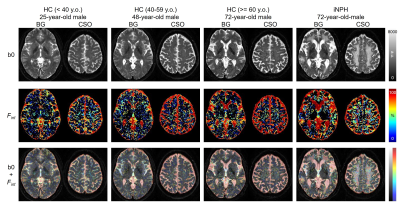 |
Computer Number: 129
4713. Assessment
of interstitial fluid dynamics in patients with idiopathic
normal pressure hydrocephalus using spectral diffusion analysis
S. Ishida, S. Yamada, T. Oki, S. Hiratsuka, M. Mase, Y.
Watanabe
Kyoto College of Medical Science, Kyoto, Japan
Impact: The interstitial fluid (ISF) dynamics between
patients with idiopathic normal pressure hydrocephalus and
healthy controls may not be significantly different in
regions other than the periventricular hyperintensity.
Additionally, age-dependent changes in ISF volume were
observed only in the pons.
|
|
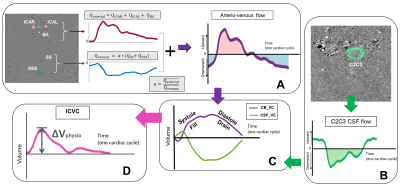 |
Computer Number: 130
4714. Craniospinal
compliance studied by PC-MRI and intracranial pressure
measurement in hydrocephalus patients
K. Owashi, P. Liu, S. Metanbou, C. Capel, O. Balédent
CHU Amiens-Picardie University Hospital, Amiens, France
Impact: This study introduces a novel method for
estimating craniospinal compliance under physiological
conditions, prompting new questions on how compliance adapts
to changes in time, volume and pressure. These insights may
enhance diagnostic accuracy and lead to better-targeted NPH
interventions.
|
|
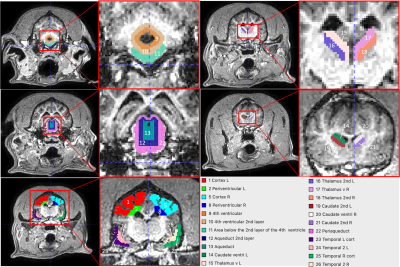 |
Computer Number: 131
4715. Gadolinium-based
contrast agent (GBCA) distribution in CSF after cisternal and
ventricular injections in a large animal model of hydrocephalous
J. Li, Y. Sun, M. Meggyesy, E. Kim, G. Williams, D. Cao, L.
Knutsson, P. Van Zijl, M. Luciano, J. Hua
Kennedy Krieger Institute, Baltimore, United States
Impact: The glymphatic system was originally discovered
in rodents. Given the surging interests to study the
glymphatic system in various human diseases, it is important
to better understand potential species differences. This
study investigates CSF distribution in a large animal model.
|
|
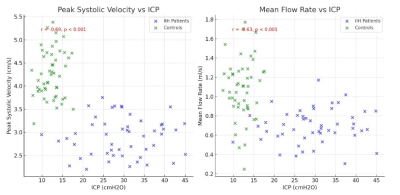 |
Computer Number: 132
4716. MRI-Based
Quantification of CSF Flow as a Diagnostic and Prognostic Marker
in Idiopathic Intracranial Hypertension: a North-African Study
Y. SAAD, N. GHARBIA, M. MHIRI, N. GOUTA, R. BEN DHIA, M.
FRIH AYED
Fattouma Bourguiba University Hospital, Monastir, Tunisia
Impact: Quantitative MRI of CSF flow offers a
non-invasive diagnostic tool that correlates closely with
IIH markers and optic pathology. This technique holds
promise for identifying high-risk patients, guiding early
intervention, and potentially monitoring treatment efficacy
in IIH management.
|
|
 |
Computer Number: 133
4717. Amplified
MR assessment of idiopathic Normal Pressure Hydrocephalus
Pre-/Post-Shunt Surgery.
F. Rezayaraghi, M. Williams, M. Kurt, M. Levitt, E. McGee,
S. Holdsworth, I. Terem, D. Turley, A. Wilson, S. Rane, J.
Andre
University of Washington, Seattle, United States
Impact: In this pilot study evaluating normal pressure
hydrocephalus patients necessitating ventriculoperitoneal
shunt (VPS) surgery, derived amplified MRI metrics correlate
with VPS status (p=0.01), and may serve as a novel biomarker
in assessing functional VPS status in clinical practice.
|
|
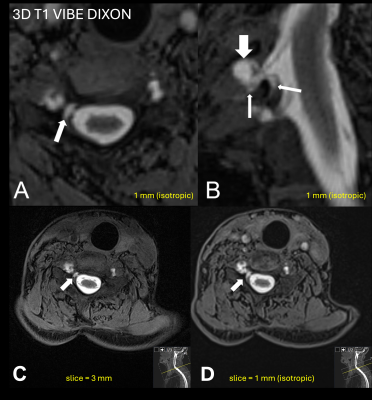 |
Computer Number: 134
4718. MR
myelography with intrathecal gadolinium: novel use of 3D T1 VIBE
Dixon sequences to depict a spinal cerebrospinal fluid leak
M. Borri, J. Ansell, D. Ryan, R. Newport, S. Mahlokozera, D.
Scoffings, L. Carlton Jones
King's College Hospital NHS Foundation Trust, London, United Kingdom
Impact: This study supports 3D spoiled gradient echo
sequences with Dixon fat suppression as a reliable option
for CSF leak assessment in clinical settings.
|
|
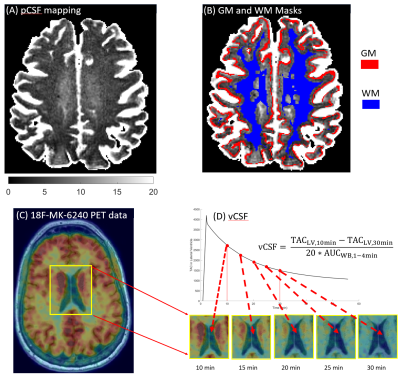 |
Computer Number: 135
4719. Parenchymal
CSF mapping (pCSF) from MR T2-relaxometry is associated with
PET-measured ventricular CSF clearance (vCSF) in Alzheimer's
disease
L. Zhou, T. Nguyen, S. Keil, X. Wang, T-w Hu, T. Butler, M.
de Leon, G. Chiang, Y. Li
Weill Cornell Medicine, New York, United States
Impact: Understanding the brain CSF transport pathway
and the association between lateral ventricle CSF turnover
rate and brain parenchyma CSF offers insights on the future
development of therapeutics for Alzheimer’s disease.
|
|
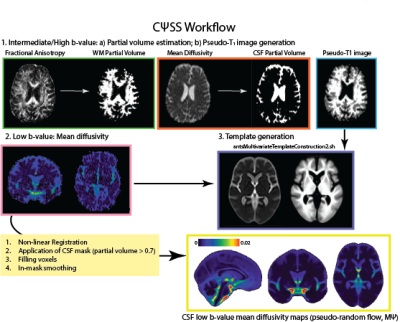 |
Computer Number: 136
4720. Voxel-wise
and Pattern-based Analysis Approaches Reveal Associations
Between CSF Pseudo-Diffusivity and Amyloid-β Biomarkers
H. Hosseini, A. Sotiras, B. Gordon, N. J. Mathurin, C. Sato,
R. Bateman, T. Benzinger, A. Nazeri
Washington University School of Medicine, Saint Louis, United States
Impact: This study demonstrates that regional CSF flow
patterns influence CSF Aβ levels, suggesting that elevated
CSF flow may enhance Aβ clearance. It emphasizes that
interindividual CSF flow variability may contribute to
unexplained differences in CSF Aβ biomarker measurements.
|
|
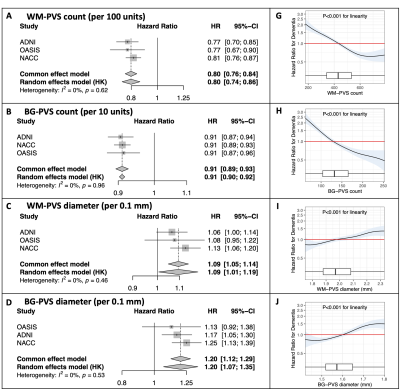 |
Computer Number: 137
4721. Cerebral
perivascular spaces as predictors of dementia risk and
accelerated brain atrophy
G. Barisano, M. Iv, J. Choupan, M. Hayden-Gephart
Stanford University, Stanford, United States
Impact: The early identification of individuals at
increased risk of dementia according to our PVS markers may
enhance the power of clinical trials targeting cognitive
decline and enable clinicians to inform patients about their
risk and to implement timely support.
|
|
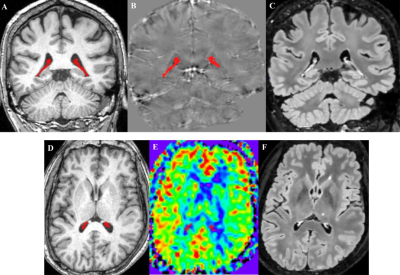 |
Computer Number: 138
4722. Choroid
Plexus Volume and Perfusion Abnormalities May Explain
Pathophysiology and Cognitive Impairment in Cerebral Small
Vessel Disease
D. Luo, Y. Li, T. Luo, L. Nie
The First Affiliated Hospital of Chongqing Medical University, Chongqing, China
Impact: The study reveals CP structural and functional
abnormalities as contributors to CSVD-related brain damage
and cognitive decline, offering new insights into CSVD
pathophysiology. These findings highlight CP-targeted
interventions as a potential therapeutic strategy.
|
|
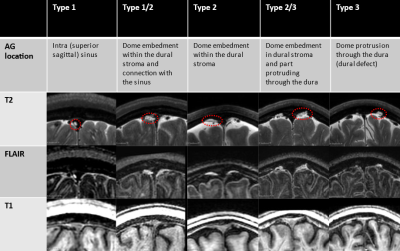 |
Computer Number: 139
4723. Arachnoid
Granulation Characterization in Dutch-type hereditary Cerebral
Amyloid Angiopathy
B. Örzsik, F. Slot, M. Schipper, F. Prinse, T. van Harten,
R. van der Zwet, R. van Dort, E. Koemans, S. Voigt, I.
Rasing, K. Kaushik, M. Wermer, J. de Bresser, M. Walderveen,
M. van Osch
Leiden University Medical Center, Leiden, Netherlands
Impact: This study highlights the role of arachnoid
granulations connected to cranial bone in Dutch-type
cerebral amyloid angiopathy, suggesting they may serve as
biomarkers for disease progression. It opens new avenues for
investigating arachnoid granulations in glymphatic-lymphatic
coupling.
|
|
 |
Computer Number: 140
4724. Evaluation
of Glymphatic-Meningeal Lymphatic Vessels with delayed contrast
enhanced vessel-wall MRI in Cerebral Infarction
M. Umehana, Y. Fushimi, S. Okuchi, S. Otani, A. Sakata, T.
Yamamoto, S. Nakajima, S. Ikeda, S. Ito, Y. Ma, S. Morooka,
J. Grinstead, S. Ahn, K. Mitsumoto, Y. Nakamoto
Kyoto University Graduate School of Medicine, Kyoto, Japan
Impact: Delayed enhancement of neighboring dura mater,
pia mater, and CSF space was observed in the large
infarction. We believe our study uncovered the pathway
immediately upstream of the meningeal lymphatic vessels
surrounding venous sinuses and cranial nerves, as previously
reported.
|
|
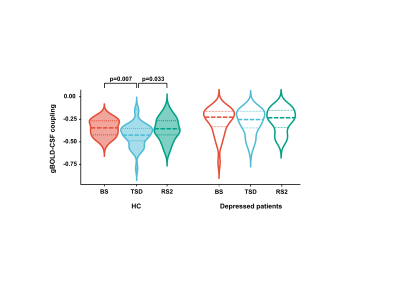 |
Computer Number: 141
4725. Altered
coupling between global signal and cerebrospinal fluid inflow in
depressed patients following sleep deprivation
W. Zhao, Y. Chai, H. Rao
Center for Magnetic Resonance Imaging Research & Key Laboratory of Brain-Machine Intelligence for Information Behavior (Ministry of Education and Shanghai), Shanghai International Studies University, Shanghai, China
Impact: Our findings reveal altered glymphatic function
in depressed patients after sleep deprivation, offering
insights for potential therapeutic interventions targeting
mood regulation and brain health in depressive disorders.
|
|
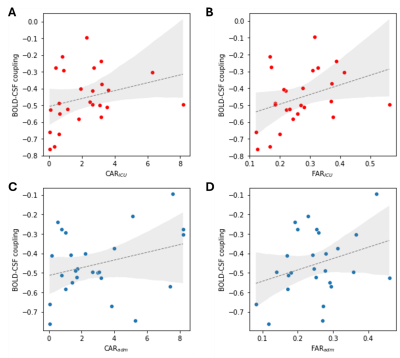 |
Computer Number: 142
4726. WEAKER
POST-COVID BOLD-CSF COUPLING IS ASSOCIATED WITH ACUTE
INFLAMMATION AND COAGULATION IN COVID-19 ICU SURVIVORS
N. van der Knaap, E. van Heese, L. Lewis, B. van Bussel, I.
van der Horst, M. Ariës, J. Jansen, M. van der Thiel
Maastricht University Medical Center, Maastricht, Netherlands
Impact: Weaker post-COVID BOLD-CSF coupling correlated
with increased inflammation and hypercoagulation during ICU
stay in COVID-19 ICU survivors. This may affect post-COVID
neurofluid dynamics and cerebral waste clearance, possibly
contributing to long COVID.
|
|
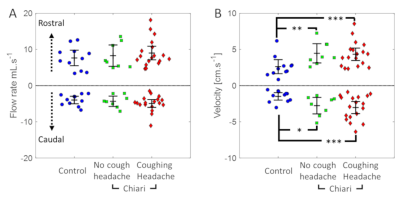 |
Computer Number: 143
4727. Using
real-time phase contrast MRI to understand coughing associated
headaches in patients with Chiari malformation
R. Lloyd, J. Berliner, A. Martinac, M. Stoodley, L. Bilston
NeuRA, Sydney, Australia
Impact: In contrast with popular hypotheses, the Chiari
patients CSF flow was not reduced following coughs, but CSF
velocities were increased. How this alters the shear
stresses acting on soft tissues may provide further insight
into the causes of headache.
|
|
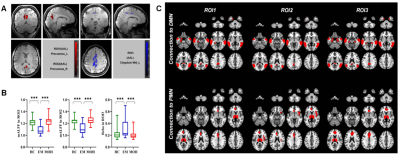 |
Computer Number: 144
4728. Glymphatic
System Dysfunction and Altered Brain Connectivity in Medication
Overuse Headache: A 7-Tesla MRI Study
X. Wang, L. Zhang, Y. Xiong, C. Duan, H. Lu, Z. Li, M. Hou,
J. Qu, X. Lou
Chinese PLA General Hospita, Beijing, China
Impact: The
ALPS index and functional changes may serve as a sensitive
neuroimaging biomarker for predicting the progression from
EM to MOH. And they may interact with each other in the
pathogenesis of patients with MOH, collectively influencing
the disease mechanism.
|
The International Society for Magnetic Resonance in Medicine is accredited by the Accreditation Council for Continuing Medical Education to provide continuing medical education for physicians.